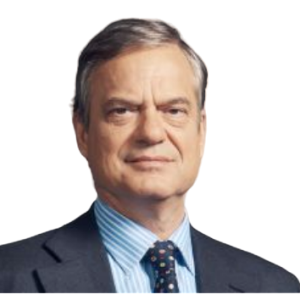What Gold Price Says About Global Finance
Global geopolitical tensions show no sign of easing any time soon, deepening the climate of uncertainty for both businesses and savers. A commentary by Lorenzo Bini Smaghi

The price of gold doubled over the past two years. Few other assets have matched its performance.
In recent days, however, the rally paused, with a correction of about 10 per cent. It may be time to ask whether levels above $4,000 per ounce are sustainable — and whether they are justified by fundamentals.
The problem is that it is not clear what drives the gold price.
Historically, gold has been one of the most reliable hedges against inflation. In the second half of the 1970s, when inflation rose to double digits, gold quadrupled in value, from $180 to $700 per ounce, before falling back during the disinflation of the early 1980s.
Prices began to climb again in 2005 during the financial bubble and continued to rise after the 2008–09 global financial crisis — until the mid-2012 ECB’s decisive intervention that ended the euro-area turmoil.
The latest surge started even before the pandemic and continued until this month, despite inflation easing from its 2022 peaks. Clearly, investors are no longer buying gold simply to protect themselves from higher prices.
Data show that central banks — especially in emerging markets — are now the largest buyers of gold. China leads the way, adding between 800 and 900 tonnes a year, followed by India and other Asian economies (around 500 tonnes per year). Latin America and the Middle East have also made substantial annual purchases of 300–400 tonnes, while European buying has instead halved over the past three years.
These shifts have come largely at the expense of US Treasury securities. Over the past decade, the share of gold in central bank reserves has risen from 10 per cent to nearly 25 per cent, while holdings of US Treasuries have fallen from 35 per cent to 25 per cent.
Emerging economies clearly want to reduce their dependence on dollar-denominated assets, which are becoming riskier as US public debt climbs — from 104 per cent of GDP in 2015 to 125 per cent in 2025. The higher risk has translated into higher yields, with long-term Treasury rates doubling from 2 to 4 per cent.
The decision to reduce dollar holdings dates back several years but has accelerated recently, as the new US administration seeks to reinforce the dollar’s global dominance — the so-called “exorbitant privilege.”
The Trump administration’s Genius Act, for example, aims to promote private currencies such as stablecoins, backed primarily by reserves held in US government debt.
If dollar-based stablecoins become dominant in global payments, they would ensure continued demand for US Treasuries, allowing Washington to finance its debt at relatively low cost.
Gold offers an attractive alternative. It also reflects the scarcity and limited liquidity of assets denominated in other global currencies, especially the euro.
As long as Europe’s financial market remains fragmented and inconsistently regulated, the euro will struggle to emerge as a credible alternative to the dollar.
Gold’s trajectory also correlates strongly with corporate uncertainty. An index based on business surveys shows that uncertainty has risen sharply over the past two years — fuelled by geopolitical tensions, trade wars, supply-chain disruptions, and commodity shortages.
Looking ahead, gold’s further upside will depend on the same forces that have propelled it so far.
Emerging economies are unlikely to slow their diversification away from the dollar anytime soon.
According to the IMF’s latest forecasts, Asian and Middle Eastern emerging markets are expected to maintain large current-account surpluses, adding more than $400 billion a year to their reserves. A significant share of that accumulation is likely to go into precious metals, especially if US fiscal trends continue to deteriorate.
Inflation may remain subdued, but higher tariffs could still feed through to consumer prices — particularly if the Federal Reserve keeps loosening monetary conditions.
Global geopolitical tensions show no sign of easing any time soon, deepening the climate of uncertainty for both businesses and savers.
All indicators seem to point in the same direction. Only the speed remains uncertain.
IEP@BU does not express opinions of its own. The opinions expressed in this publication are those of the authors. Any errors or omissions are the responsibility of the authors.
